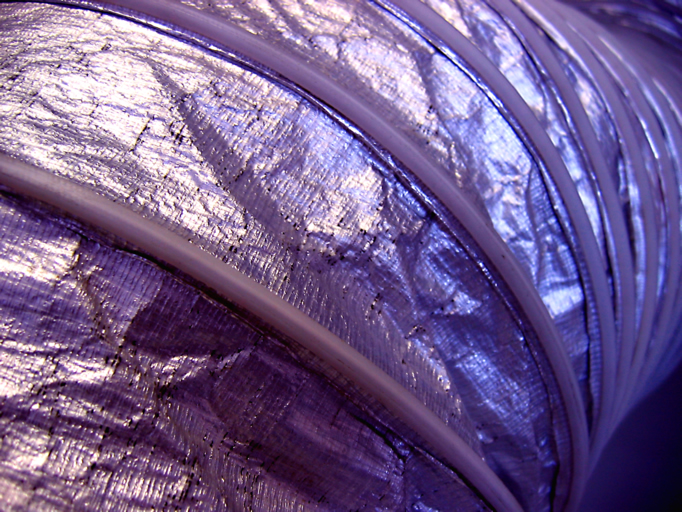 Ductwork plays an important role in the function and overall efficiency of heating ventilation and cooling (HVAC) systems. Once the air passes through the coolant-filled condenser coils, it’s pumped throughout the house via the ductwork. Typically, ducts to a good job of spreading the cool air (or warm air) throughout the home, but in some cases they may develop thermal leaks where the air can escape.
Ductwork plays an important role in the function and overall efficiency of heating ventilation and cooling (HVAC) systems. Once the air passes through the coolant-filled condenser coils, it’s pumped throughout the house via the ductwork. Typically, ducts to a good job of spreading the cool air (or warm air) throughout the home, but in some cases they may develop thermal leaks where the air can escape.
If one or more air ducts in your attic have a thermal leak, you could end up paying more for your monthly electric bill. When the cool air travels through the ductwork, some of it may escape through cracks, crevices and other openings. In turn, this forces the air conditioner to work overtime to recoup the lost thermal energy. Even if your HVAC system is still able to keep your home comfortably cool, the loss of thermal energy raises your utility costs.
The good news is that homeowners can usually fix thermal thermal leaks in ductwork without the need for a professional contractor or HVAC technician. Assuming your ductwork is located in the attic, refer to the steps below for a quick and easy do-it-yourself solution to thermal leaks.
Steps To Sealing Attic Air Ducts
- Locate the source of the thermal leaks by inspecting the ductwork while the air conditioner is running.
- Use zip ties to secure any loose ducts to the attic floor.
- Apply a generous amount of sealant mastic over the thermal leak.
- Make sure the duct is secure in place and wait for it to dry.
- Once the mastic has dried, the thermal leak should be eliminated.
Note: sealant mastic is only designed for thermal leaks under 1/4″. If the hole or gap is larger than 1/4″, you must first apply a web-type drywall tape to create a bridge, and then you can apply the mastic sealant. The tape serves as a base for applying the mastic sealant.
Contrary to what some people may believe, duct tape is not the preferred method for sealing thermal leaks in ductwork. Mastic sealant compound is much more effective at sealing leaks and gaps than tape. If you are going to use tape, however, you should use foil tape that’s designed to withstand high heat. This will ensure the tape stays on when the hot air is passing through the home’s central heating.
Are you struggling with loose air ducts? Let us know in the comments section below!